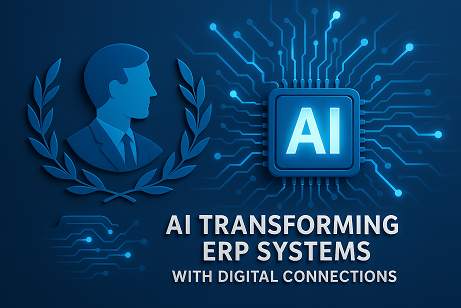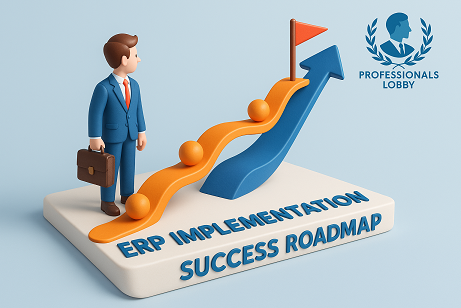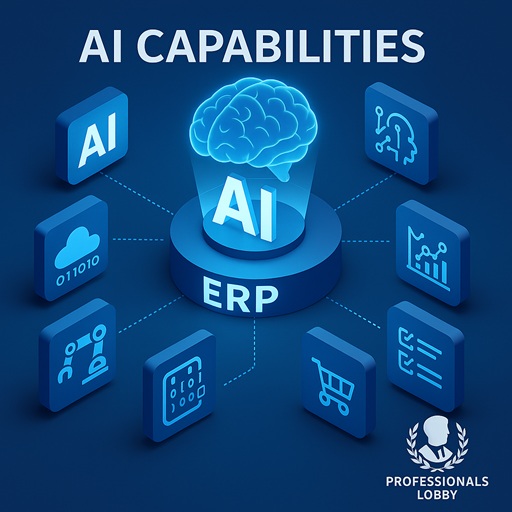Artificial Intelligence is revolutionizing Enterprise Resource Planning systems, transforming them from static record-keeping tools into dynamic, predictive platforms that drive business growth. This comprehensive guide explores the 12 key ways AI is enhancing ERP capabilities, with specific examples relevant to UAE businesses across industries.
Key Takeaways:
- AI adds predictive capabilities to traditional ERP systems
- Automation reduces manual work by 40-60% in key processes
- Natural language interfaces make ERP more accessible
- Real-time anomaly detection improves decision making
- UAE businesses can gain competitive advantage through AI-powered ERP
Quick Navigation
1. Predictive Analytics & Forecasting
AI-powered predictive analytics is perhaps the most transformative application in modern ERP systems. By analyzing historical data and identifying patterns, AI can forecast future outcomes with remarkable accuracy.
Inventory Optimization
AI predicts demand fluctuations based on seasonality, market trends, and past sales, automatically adjusting reorder points and quantities.
Cash Flow Forecasting
Machine learning models analyze payment patterns, seasonal trends, and economic indicators to predict cash flow needs 3-6 months ahead.
Customer Churn Prediction
Analyzes customer behavior patterns to identify at-risk accounts before they leave, enabling proactive retention strategies.
Technical Deep Dive
Modern ERP systems use several AI techniques for prediction:
- Time Series Forecasting: ARIMA, Prophet, and LSTM neural networks for demand planning
- Classification Models: Random Forest and XGBoost for customer segmentation
- Ensemble Methods: Combining multiple models for higher accuracy
2. Intelligent Process Automation
AI automates repetitive ERP tasks, freeing employees for higher-value work while reducing errors. Our research shows UAE businesses can automate 40-60% of routine ERP interactions.
Key Automation Use Cases
AI extracts data from PDFs, emails, and scanned invoices with 95%+ accuracy, automatically coding expenses and matching to POs.
Machine learning identifies and merges duplicate records, standardizes formats, and validates information against external sources.
AI considers traffic, weather, fuel costs, and delivery windows to optimize routes in real-time across the UAE.
3. Conversational AI Interfaces
Natural language processing (NLP) enables voice and text-based interactions with ERP systems, making complex data accessible to all employees.
Real-World UAE Examples
- "Show me overdue invoices from Emaar Properties"
- "Compare this quarter's sales to last year by region"
- "Which products need reordering next week?"
These natural language queries return instant reports without navigating complex menus.
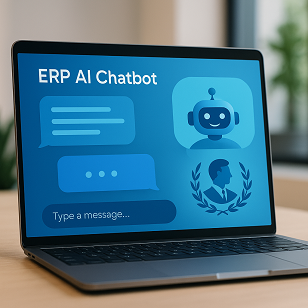
Faster Decision Making
Managers get answers in seconds instead of running custom reports
Reduced Training Needs
Employees don't need deep ERP knowledge to get information
Mobile Accessibility
Voice queries work especially well on mobile devices
Multilingual Support
Arabic/English understanding crucial for UAE workforce
4. Real-Time Anomaly Detection
AI continuously monitors ERP data streams to identify unusual patterns that may indicate errors, fraud, or opportunities.
Financial Anomalies
- Duplicate payments
- Unusual vendor activity
- Budget deviations
- Round-dollar transactions
Inventory Anomalies
- Unexpected stock movements
- Theft patterns
- Warehouse discrepancies
- Seasonal demand shifts
HR Anomalies
- Timecard irregularities
- Overtime spikes
- Absenteeism patterns
- Payroll discrepancies
How AI Detection Works
Establish baseline patterns from historical data
Monitor real-time transactions against patterns
Flag deviations with confidence scores
Learn from analyst feedback to improve
5. Personalized User Experiences
AI tailors ERP interfaces and workflows to individual user roles, preferences, and behavior patterns.
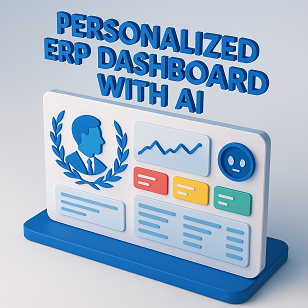
Adaptive Dashboards
ERP home screens automatically highlight the KPIs, reports, and tasks most relevant to each user's role and recent activities.
- CFOs see cash flow and AR aging
- Warehouse managers see inventory alerts
- Sales reps see pipeline and quotas
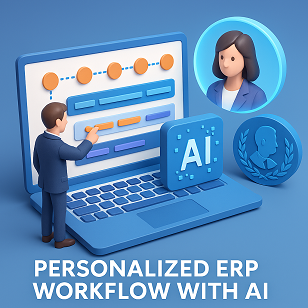
Intelligent Workflows
The system learns individual work patterns and optimizes processes accordingly:
- Frequently used transactions appear first
- Forms pre-fill based on past entries
- Approval paths adjust to employee availability
AI-ERP Success Stories from UAE Businesses
Real-world examples of UAE companies transforming operations with AI-powered ERP solutions.
Dubai Industrial Manufacturer
Implementation Highlights
- AI-powered predictive maintenance reduced equipment failures
- Machine learning optimized raw material procurement
- Natural language queries replaced complex reporting
UAE Retail Chain
Implementation Highlights
- AI demand forecasting optimized stock levels
- Personalized promotions based on purchase history
- Automated replenishment reduced stockouts
Abu Dhabi Construction Firm
Implementation Highlights
- AI predicted material price fluctuations
- Automated progress billing improved cash flow
- Equipment utilization optimization reduced rentals
Dubai Logistics Provider
Implementation Highlights
- Dynamic route optimization based on real-time traffic
- Automated load balancing increased vehicle utilization
- Predictive maintenance reduced breakdowns
Implementing AI in Your ERP System
Practical steps for UAE businesses to integrate AI capabilities into existing or new ERP implementations.
Assess Your Readiness
- Evaluate data quality and completeness
- Identify high-impact use cases
- Assess IT infrastructure requirements
Choose the Right Approach
Prioritize Quick Wins
Start with high-ROI, low-complexity applications:
Plan for Change Management
- Train employees on new capabilities
- Establish feedback channels
- Measure and communicate successes
AI Capabilities by Leading UAE ERP Systems
| ERP System | Predictive Analytics | Process Automation | Conversational AI | Anomaly Detection |
|---|---|---|---|---|
| SAP S/4HANA | Advanced | Advanced | Basic | Advanced |
| Oracle NetSuite | Advanced | Moderate | Moderate | Moderate |
| Microsoft D365 | Moderate | Advanced | Advanced | Moderate |
| Odoo AI | Basic | Moderate | Basic | Basic |
Key Recommendations for UAE Businesses
Start with a Use Case Assessment
Identify 2-3 high-impact areas where AI can deliver quick wins in your ERP system.
Prioritize Predictive Capabilities
Demand forecasting and cash flow prediction often deliver the fastest ROI.
Focus on User Adoption
Ensure employees understand how AI tools make their jobs easier, not obsolete.
Get Expert Guidance on AI-ERP Integration
Our consultants help UAE businesses identify and implement the most valuable AI capabilities for their ERP systems.
Request Free Consultation